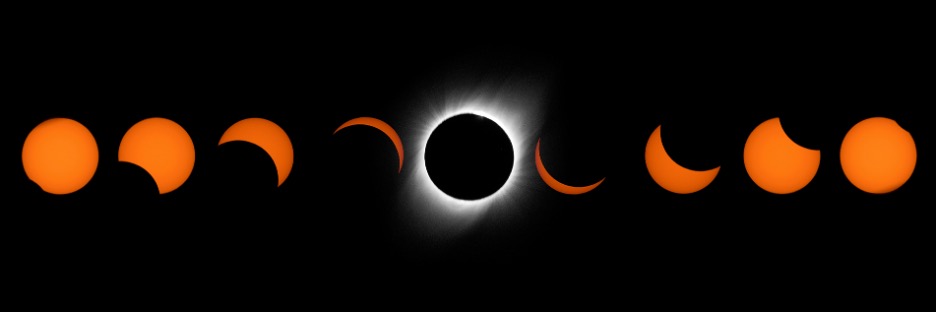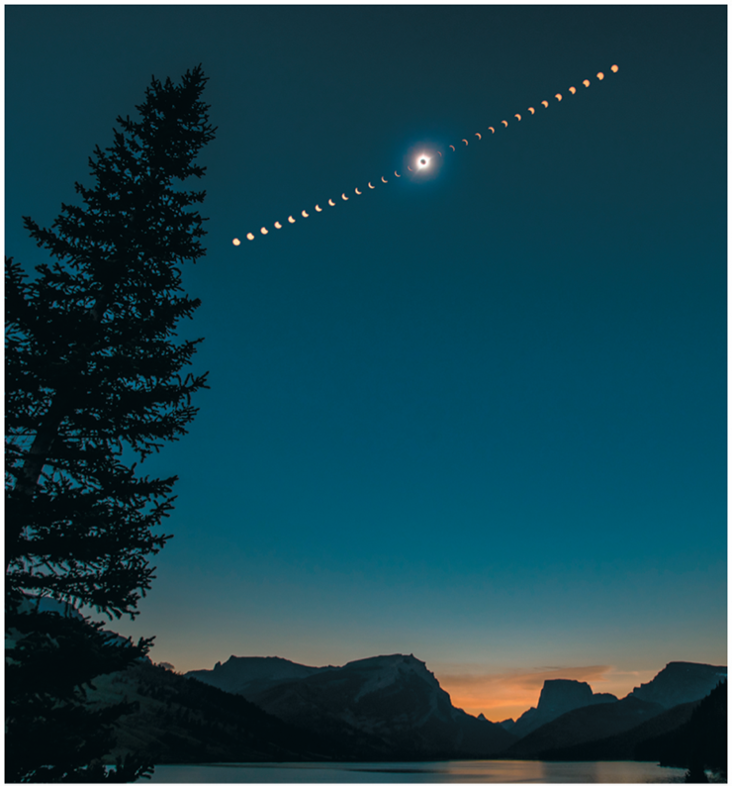The Awe of a Total Solar Eclipse
 Matthew Pryal is Assistant Professor of the General Faculty in the Department of Astronomy at the University of Virginia. He teaches large-enrollment introductory astronomy courses for non-science majors and is actively involved in department public outreach. He leads Astronomy on Tap-Charlottesville, bringing astronomy research and trivia for free to the general public in relaxed settings. Additionally, he frequently runs free planetarium shows for all ages throughout Charlottesville and Albemarle County.
Matthew Pryal is Assistant Professor of the General Faculty in the Department of Astronomy at the University of Virginia. He teaches large-enrollment introductory astronomy courses for non-science majors and is actively involved in department public outreach. He leads Astronomy on Tap-Charlottesville, bringing astronomy research and trivia for free to the general public in relaxed settings. Additionally, he frequently runs free planetarium shows for all ages throughout Charlottesville and Albemarle County.
On April 8th, 2024, a total solar eclipse will streak across North America, leaving behind a trail of millions of awe-inspired individuals. As the 120-mile-wide shadow of the Moon travels over the surface of the Earth at more than 1500 miles per hour, those located within the path of ‘totality’ will experience a spectacle that has amazed and baffled humanity since we’ve been capable of thought. So, if you haven’t done so yet, start planning your trip now.

Earth is Special
By random chance, we live on a planet where our moon (the Moon) and star (the Sun) are about the same apparent size in the sky. This is because the Sun is physically about 400 times larger than the Moon and coincidentally located about 400 times more distant. This means that when the orbits line up just right, our Moon can perfectly block the face of the Sun, creating darkness during the day and revealing the spectacular crown-like outer atmosphere of the Sun known as the ‘corona.’

There is no other planet in the Solar System where a moon and the Sun share this nearly perfect ratio. Even more fascinating is that we live during an age where total eclipses are possible on the Earth. The Moon is moving away from the Earth at a rate of about 1.5 inches per year. As the Moon moves further away, its apparent size gets smaller. In about 650 million years, the Moon will be so distant that total eclipses will no longer be visible from the surface of the Earth.
The Stuff of Legends
On average, a single location on Earth experiences totality every 400 years. This rarity has sparked myths and superstitions amongst humans for centuries, and the drive to predict eclipses has likely played a major role in modern science and astronomy development. Only within the past ~2000 years have we been able to predict the precise timing and locations of eclipses accurately. So today, everybody on Earth can know when and where to travel to experience the events that once lived in legends. After April 8th, 2024, a total eclipse won't be visible in the U.S. until August 12th, 2045.
Towards Totality
An eclipse's “partial” phase begins once the edge of the Moon and the Sun meet in the sky. Only with eclipse glasses, which allow you to look at the Sun safely, will you notice the Sun dwindle over about 80 minutes. Your pupils will dilate slowly due to reduced sunlight, making the brightness around you seem like any other day. Without the aid of your glasses, you would have no idea an eclipse was even occurring.
A few minutes before totality is when things get more interesting. Through your glasses, the Sun will look more like a crescent. In the last moments before totality, you can take your glasses off to notice the last beads of sunlight streaking through the valleys of the Moon. The brightness around you will feel like twilight. You’ll notice the relative speed of the Moon and the Sun in the sky.

Then the lights will go out.
Standing in the Shadow of the Moon
At that moment, perhaps for the first time in your life, you will be standing in the shadow of the Moon. Daytime has turned, almost instantly, to night. You'll start to understand how all those legends and myths were born.
Immediately, you'll notice the corona shimmering around the vacant Sun. With sunlight no longer scattering through your region of the Earth’s atmosphere, you'll be able to see stars, constellations, and planets. If you’re able to see to the horizon, you’ll notice sunset colors in every direction.
The temperature will drop by about 10 degrees due to the sudden lack of sunlight. Birds, bugs, animals, and even humans will begin to cry out in confusion/joy as it suddenly becomes dusk. Any sliver of sunlight will be the difference between day and night, so these experiences will only be possible on the path of totality.

Totality will only last about 4 minutes, yet every second of your journey will have been worth it. Darkness will again be met by light, and you will need to put your eclipse glasses on to watch the Sun return safely. I’d recommend taking that time to plan out your next eclipse vacation.
Memorable Moments
I was lucky enough to spend 1 minute and 58 seconds in the shadow of the Moon with two of my sisters, friends, and strangers during the August 21, 2017, eclipse from Tellico Plains, TN (population: ~900).
Brought together randomly by the eclipse, we all shared food, drinks, card games, and life stories. Engaging in that humanity is one of the things I look back on most fondly about that trip. On April 8th, I hope you can share a similar experience with others. And once totality begins, and if there are no clouds in the sky, appreciate how lucky you are to see legend become a reality.
Clear skies!

- A Revolution in the Air: The Wright Brothers Take to the Sky on December 17, 1903
- Musings on National Violin Day
- Making the Promise Real: How a UN Tax Convention Can Fulfill the UNDHR’s Vision
- UVA Club of Atlanta: Virtual Pilates Class
- UVA Club of Houston: Hoo-liday Party
- UVA Club of Fredericksburg: Hoo-liday Lights Tour